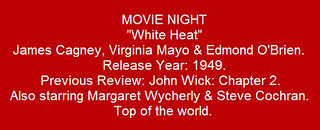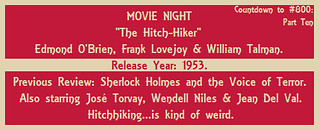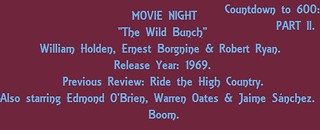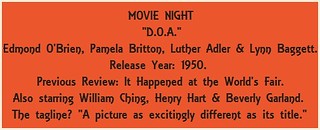Cast:
Burt Lancaster (Pete Lund/Ole "Swede" Anderson), Ava Gardner (Kitty Collins), Edmond O'Brien (Jim Reardon), Albert Dekker ("Big Jim" Colfax), Sam Levene (Lt. Sam Lubinsky), Vince Barnett (Charleston), Virginia Christine (Lilly Harmon Lubinsky), Jack Lambert ("Dum-Dum" Clarke), Charles D. Brown (Packy Robinson), Donald MacBride (R.S. Kenyon), Charles McGraw (Al), William Conrad (Max), Phil Brown (Nick Adams), and Jeff Corey ("Blinky" Franklin) Directed by Robert Siodmak (#468 - Son of Dracula, #797 - People on Sunday, and #1826 - The Suspect)
Review:
In 1927, Ernest Hemingway's short story "The Killers" was published in literary form. Set in his home state of Illinois, it details two hitmen entering a restaurant with an owner and a cook alongside a patron named Nick Adams, which Hemingway wrote from his own experiences. The two hitmen suddenly take Adams and the cook into the kitchen to tie them up while telling the owner that they were hired to kill a prizefighter expected to enter the place soon. Of course, when the guy doesn't show up, the hitmen leave while Nick is sent to a boarding house to warn the man about the job, but Nick is told to do nothing because it is futile for there to be attempts to save him from his fate. Hemingway later stated, "That story probably had more left out of it than anything I ever wrote. I left out all Chicago, which is hard to do in 2951 words." The entirety of that story is told in the first twenty minutes of the 1946 film adaptation (the killing depicted isn't in the actual story, of course). This was the fourth adaptation of a Hemingway story, following in the wake of A Farewell to Arms (1932), For Whom the Bell Tolls (1943), and To Have and Have Not (1944). The screenplay is credited to Anthony Veiller, although it was said in later years that Richard Brooks and John Huston contributed to the script in uncredited form. At the helm as director was Robert Siodmak, who had directed films in his native Germany and France before being driven to America by the rise of Nazism each time. He had done his fair share of genres, although most know his film noirs or B-movies that made him a "actor's director". This would work wonders for Burt Lancaster, who was making his film debut. He actually had an early interest in theatre productions and the circus from a young age, but injuries had him give up the circus. After serving in the U.S. Army in World War II, he took up acting and made an impression on Broadway in a flash. Mark Hellinger, who produced The Killers, happened to need another unknown to make up the cast after getting Ava Gardner from doing pretty much nothing at MGM (Wayne Morris and Sonny Tufts were the initial choices in mind for the role played by Lancaster). He got a tip about Lancaster (near the age of 33 when this film was released), who had signed a contract with Hal Wallis but hadn't made anything for release until Hellinger tested him and decided to sign him on. The film was an audience hit and received four Academy Award nominations that year (directing, editing, score, and screenplay), for which it received none. In 1964, a second adaptation of the story was done in film (after being thought of as too much for television) with Don Siegel as director that had Lee Marvin, Ronald Reagan, and Angie Dickinson as stars.
The premise sure is an interesting one to setup a noir, particularly one built for 103 minutes where one of the key characters is dead right then and there. But it is the journey in the way that things are shot or lit that matters when the scenarios matter most with femme fatales, double crosses, and the good ol' setup for a bag of dough. It isn't often you get a cast filled with so many dependable actors (future or at the moment), whether as stars or not. O'Brien is the one observing all of the pieces moving across the board that has the air of inevitability that he does well with, maneuvering through the tension with good timing. Lancaster is a lean block of excellence, one who generates screen presence in a near instant that delivers well among the flashback sequences told (aside from the one of his death, which he handles pretty well to begin with) in a malleable force of nature. He will only end up in one path, but it is the choices that are made there that make it interesting to see the level of challenge it takes for anyone to try and escape their big desire. It's clear to see how his face became one to reckon such desires in further films. Gardner makes a solid femme fatale, one who has the allure required to drive tension into the heart of anyone, a devastating display of dashing duplicity. The rest of the cast follow along in worthy interest for the subject at hand, whether that involves the heavy or the key part of the crisscross of who is fixing who. The robbery sequence itself is executed quite skillfully, done with resounding timing without wasting a moment. By the time the film has maneuvered its way through all of the twists and turns that come with "the best laid plans of mice and men often go awry”, the final result is a lean and mean noir that shows the potential of its stars in a solid effort from Siodmak and company. The fatalistic nature of the whole affair makes for a solid entertaining ride that merited the highest praise from Hemingway, who once called it "the only good picture ever made of a story of mine." That pretty much says it all right then and there.
Overall, I give it 8 out of 10 stars.


 Review #1409: The Man Who Shot Liberty Valance.
Review #1409: The Man Who Shot Liberty Valance.




